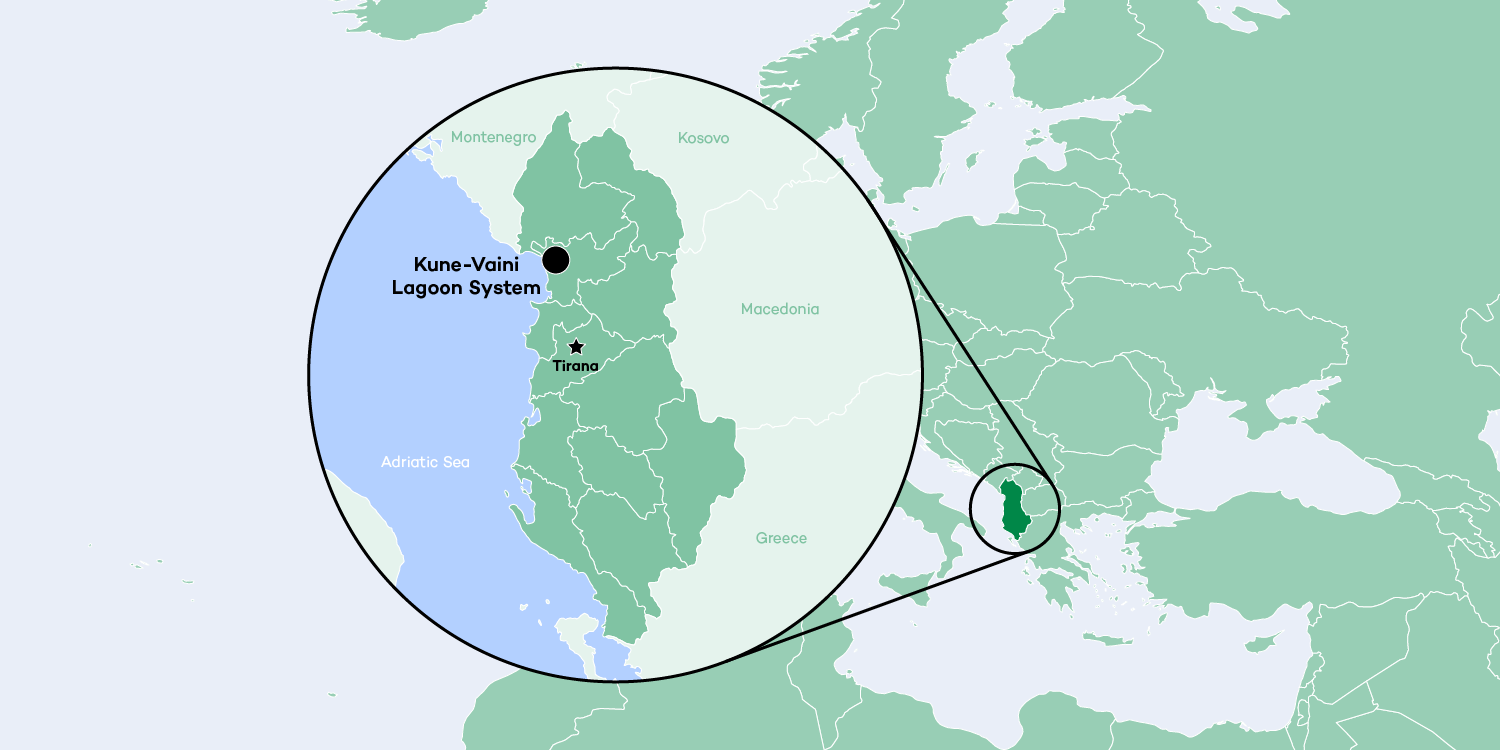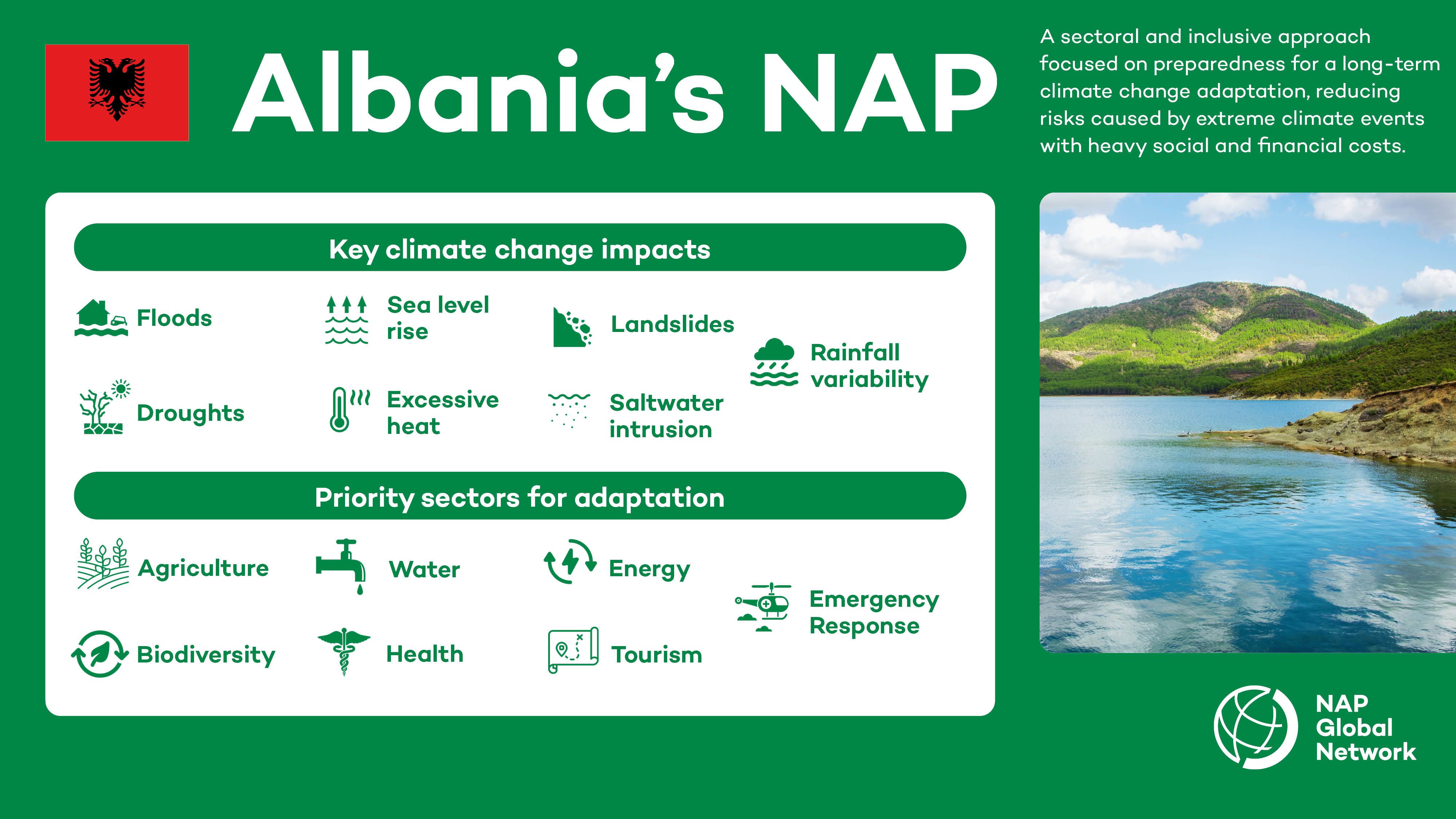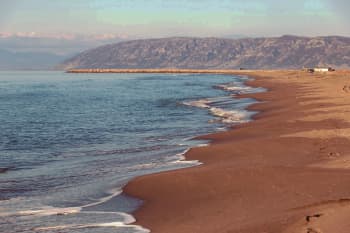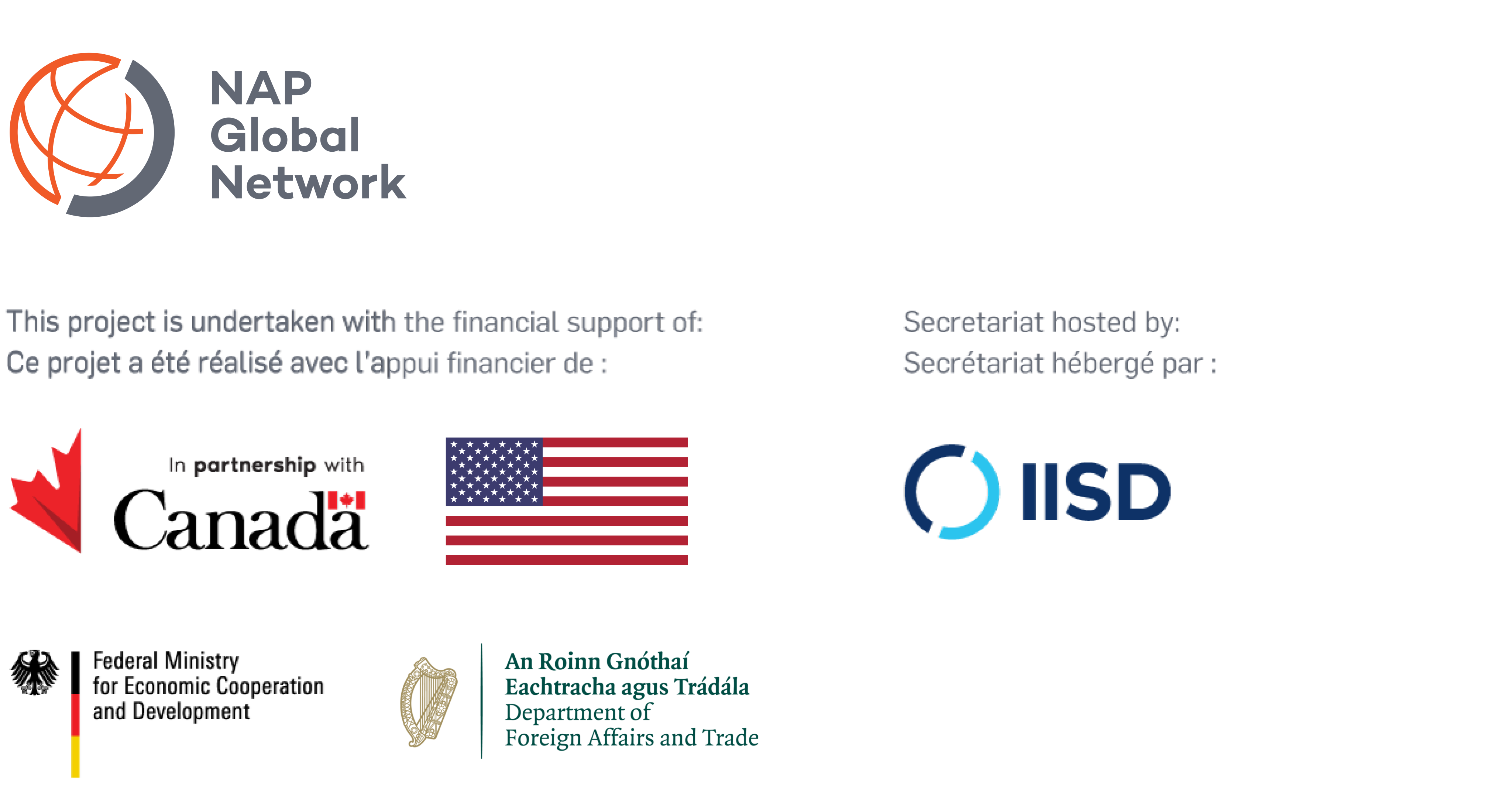Protecting Kune-Vaini Lagoon
Scaling up ecosystem-based adaptation in Albania’s oasis for migratory birds
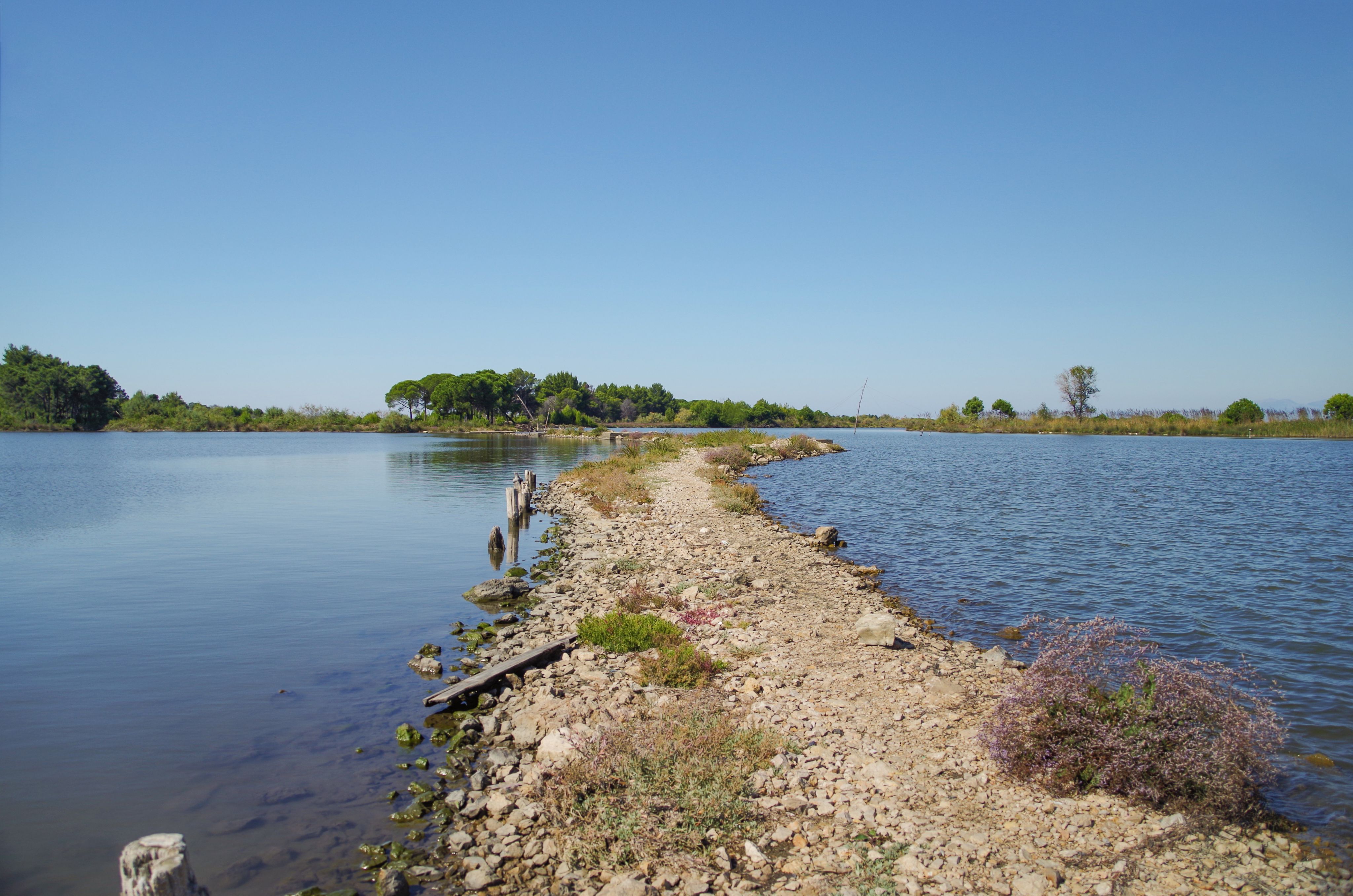
The Kune-Vaini Lagoon System (KVLS) in northern Albania is an important ecological corridor for about 200 species of birds on their migration routes. Its rich ecosystems support local communities’ livelihoods, especially agriculture, fishing, and tourism.
Because of climate change, this ecological wonder is under threat. But a project prioritized through the National Adaptation Plan (NAP) process to protect the lagoon is showing how working with ecosystems can help communities prepare for and cope with the impacts of climate change across Albania.
Albania’s Climate Change Challenge

More frequent and intense flooding is one of the most serious climate change threats that Albanians face. Brahim Demi’s family is one of many that has been farming in the region for over a century. In 2008, the Demi farm was inundated by one of the most devastating floods that has ever hit the region.
“That flood covered all the land here, the trees, and everything we had,” he recalls.
Since 2008, the Demis have continued to suffer the effects of flooding. “As a result of the saltwater flood, we have been forced to change our crops several times. We used to have grapes and cherries here, but today they are gone, totally dried up. They should be replaced with other varieties that adapt to the new soil,” says Demi, who is now experimenting with growing citrus fruits.
Watch Brahim Demi talking about the floods that have impacted the Kune-Vaini lagoon region, how climate change has affected his crops and livestock, and the benefits of the EbA intervention in the area.
Violeta Nodca, a farmer from the neighbouring city of Lezha, has similarly endured multiple floods in recent years. “During the floods, the water destroys our crops, [and our livestock’s] pastures,” she says. In addition to harming crops, Nodca says the floods have put pressure on the local tourism industry.
“If the state takes care of this lagoon, it will bring about a greater development for our village,” she says.
Check out Violeta Nodca on recent years' damage caused by floods in the Lezha region.
Between 1997 and 2017, floods caused USD 218 million in damage in Albania. By 2030, a third of the country’s coastal areas are expected to be regularly hit with flooding. Inundated farmland and increased salinity of the soil have already had serious impacts on agriculture and fisheries—sectors that employ over a third of Albanians.
Such disasters have spurred the Albanian government to find longer-term solutions. To respond to climate hazards like the 2010–2011 floods, Albania launched its NAP process in 2015.
Albania’s National Adaptation Plan: Prioritizing ecosystem-based adaptation

Led by the Ministry of Tourism and Environment, Albania’s NAP sets out a strategic path for reducing vulnerability and accelerating efforts to build climate change resilience. The NAP document was developed in 2015 with a 20-year time horizon to 2035, and was submitted to the UNFCCC in 2021.
The country’s first NAP sets out 15 priority actions, including a flagship EbA pilot project to protect the KVLS region’s ecosystems and livelihoods.
The 40-square-kilometre KVLS region is recognized as a biodiversity hotspot.
“Experts have called it an oasis of ornithology in the Mediterranean for its diversity of birds,” says Jak Gjini, an engineer and environmental expert who has spent much of his career researching the Kune-Vaini Lagoon region.
Gjini observes that the Kune-Vaini Lagoon was among Albania’s first protected areas in the 1940s and that communities’ livelihoods rely on the lagoon ecosystem. But the region has been under increasing stress, facing the combined effects of climate shocks, rapid population growth, growing poverty rates, and over-exploitation of the ecosystem’s resources.
The Building the Resilience of Kune-Vaini Lagoon through Ecosystem-based Adaptation (EbA) project was implemented by UN Environment Programm (UNEP) with funding from the Global Environment Facility (GEF), co-financed with domestic budget. It was approved for GEF funding in 2013 and implemented from 2016 to 2020. Results are already showing.
Click here to access Albania's National Adaptation Plan document.
Click here to access Albania's National Adaptation Plan document.
Ecosystem-Based Adaptation
“Ecosystem-based adaptation” is a type of nature-based solution that has been defined by the Convention on Biological Diversity as: “the use of biodiversity and ecosystem services as part of an overall adaptation strategy to help people to adapt to the adverse effects of climate change. It aims to maintain and increase the resilience and reduce the vulnerability of ecosystems and people in the face of the adverse effects of climate change."
Convention on Biological Diversity. (2009). Connecting biodiversity and climate change mitigation and adaptation: Key messages from the Report of the Second Ad Hoc Technical Expert Group on Biodiversity and Climate Change. Secretariat of the CBD.
Watch Eneida Rabdishta explaining the Albanian approach to ecosystem-based adaptation.
Overcoming Challenges
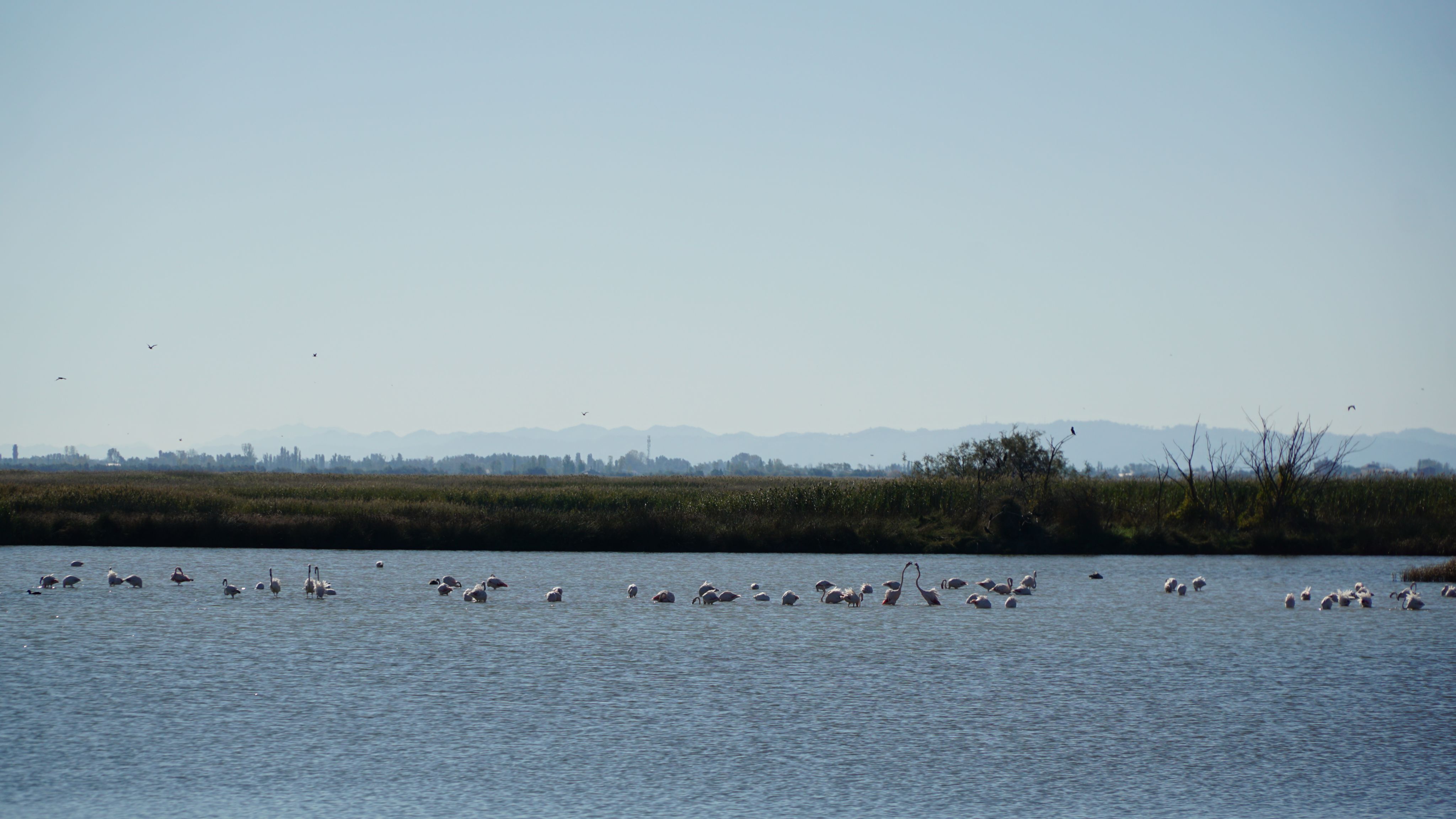
The government’s first efforts to reach out to local communities to consult about the proposed EbA project were met with skepticism.
“Kune-Vaini is one of the most important protected areas in Albania,” says Eneida Rabdishta, a climate change expert working for Albania’s Ministry of Tourism and Environment, but says local citizens initially “were discouraged and the lagoon was almost destroyed.”
Eneida Rabdishta describes the importance of Kune Vaini Lagoon’s ecosystem and points out the challenges faced in implementing the EbA project.
As the project consultations got underway, the project team also faced challenges in achieving gender balance in consultations—as many women had responsibilities that prevented them from attending and participating in workshops and round tables—in addition to the COVID-19 pandemic causing challenges for bringing community members together to discuss the project.
In overcoming these challenges, the project team designed an EbA project that drew on a careful assessment of social, ecological, and other factors.
How Kune-Vaini Is Adapting to Climate Change
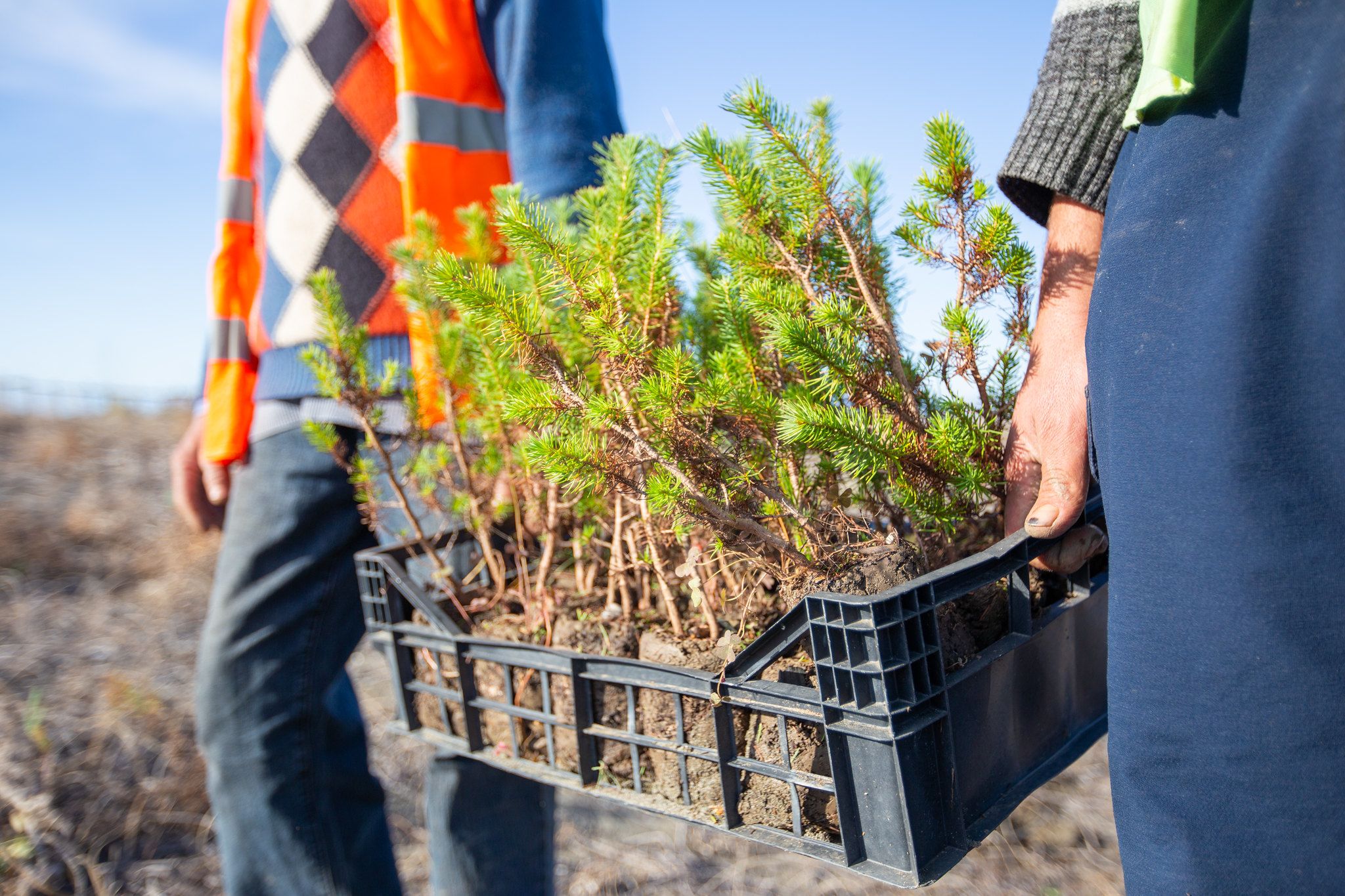
The EbA project aimed to use ecosystems to reduce flood damage, enhance the resilience of local agriculture to flooding, and protect the quality of drinking water against climate change. Building on previous efforts piloted in the region, the project has used three main approaches: dune rehabilitation, reforestation, and an engineering method to open the tidal channel inlet.
Dune Rehabilitation
A thin strip of dunes separates the lagoon from the Adriatic Sea. These dunes were being rapidly eroded by rising sea levels and storms, which were also damaging the breeding sites of bird species. “The sea is advancing in a frightening way towards the territory,” Gjini says.
One of the project’s key strategies was planting vegetation that could reduce the wind speed over the dunes and help rebuild sand deposits.
The main species chosen for the rehabilitation was a native marram grass (Ammophila arenaria L.)—a perennial plant that can grow in sand and salty soil. The second species used in the restoration was marina (Tamarixparviflora DC.), a shrub-like plant that can reach up to 5 metres in height.
Through the EbA project, over 65,000 seedlings of the two species were planted in order to rehabilitate 2,000 metres of coastal dunes. Seedling survival rates have varied by area but overall have been positive.
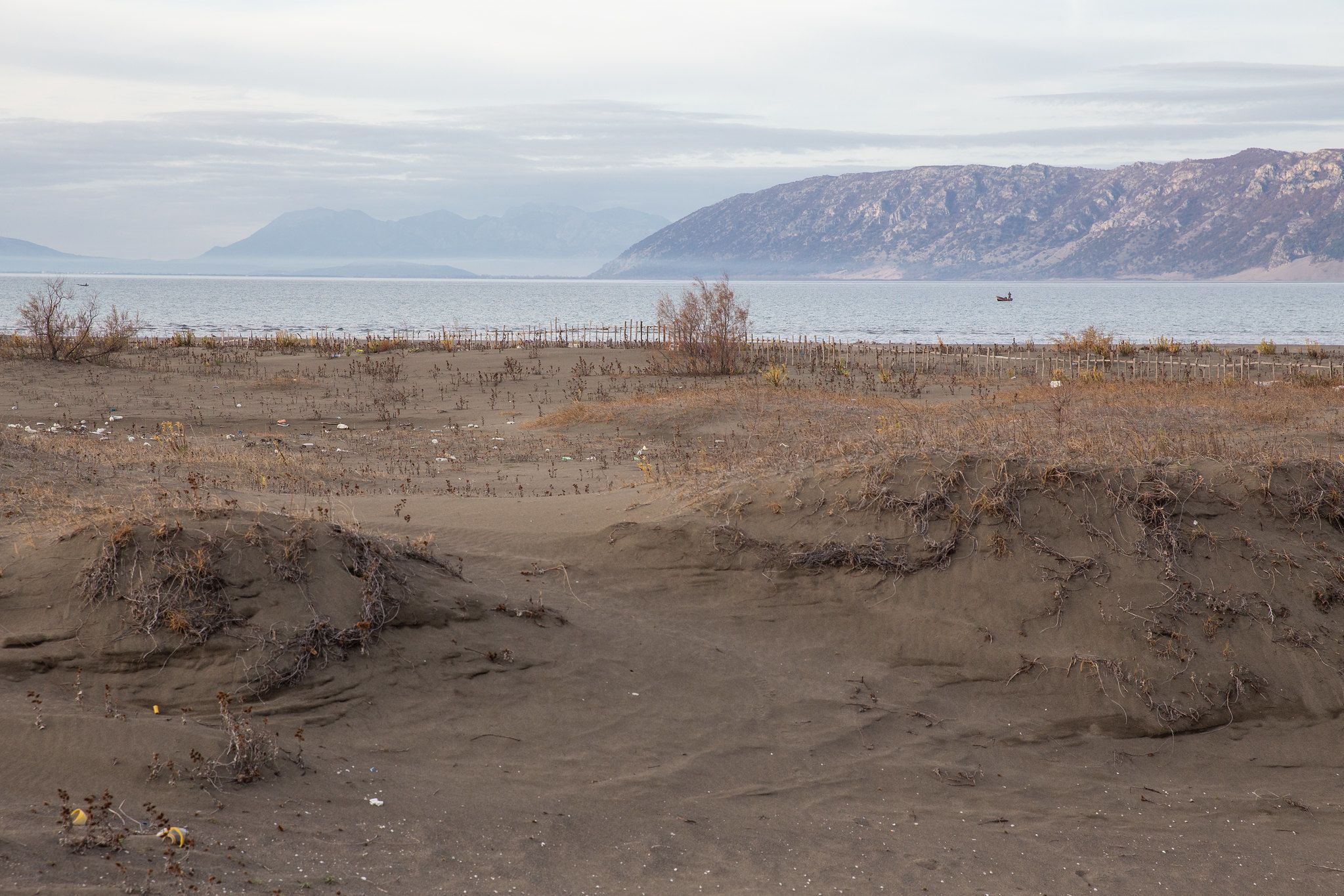
Reforestation
Recent degradation of Mediterranean species of trees in the KVLS has affected biodiversity—threatening bird nesting and breeding mammals—as well as losing out on the forests’ benefits for flood resilience and water quality.
Over 14,500 seedlings of climate-resilient species—Aleppo pine, stone pine, four-stamen tamarisk, ash, and English oak—were planted across the KVLS, including close to the dwindling entry of the tidal channel. By protecting the ecosystem, this replanting aimed at providing a natural “green belt” buffer from storm inundation.
Reforestation efforts did encounter some challenges. Some tree saplings grew slowly, and many pines did not survive flooding. But many seedlings have thrived.

Opening the Tidal Channel Inlet
Gradually, less and less water has been flowing through the tidal channel that connects the Adriatic Sea and the Kune-Vaini Lagoon System. This reduced flow has had multiple negative effects—worsening water quality, increased pollution, harm to bird habitats, and major economic impacts on fish stocks and eco-tourism.
“The lagoon mouths were very unstable,” said Xhel Loshi, a local fisher. Loshi says if the tidal channel inlets close, “there is neither fish nor vegetation and everything changes.”
Xhel Losi speaks about the impacts of the EbA intervention in KVLS.
Though it deviates from a purely EbA approach, the project team chose to make use of an engineering solution: a sand dredger to remove the deposits of sediments from the channel’s bed.
“Over time, it was estimated that marine sediments would close this channel,” says environmental expert Jak Gjini. “Although this is an engineering intervention, its benefits are manifold because they generate a biological abundance throughout Vaini’s ecosystem and beyond.”
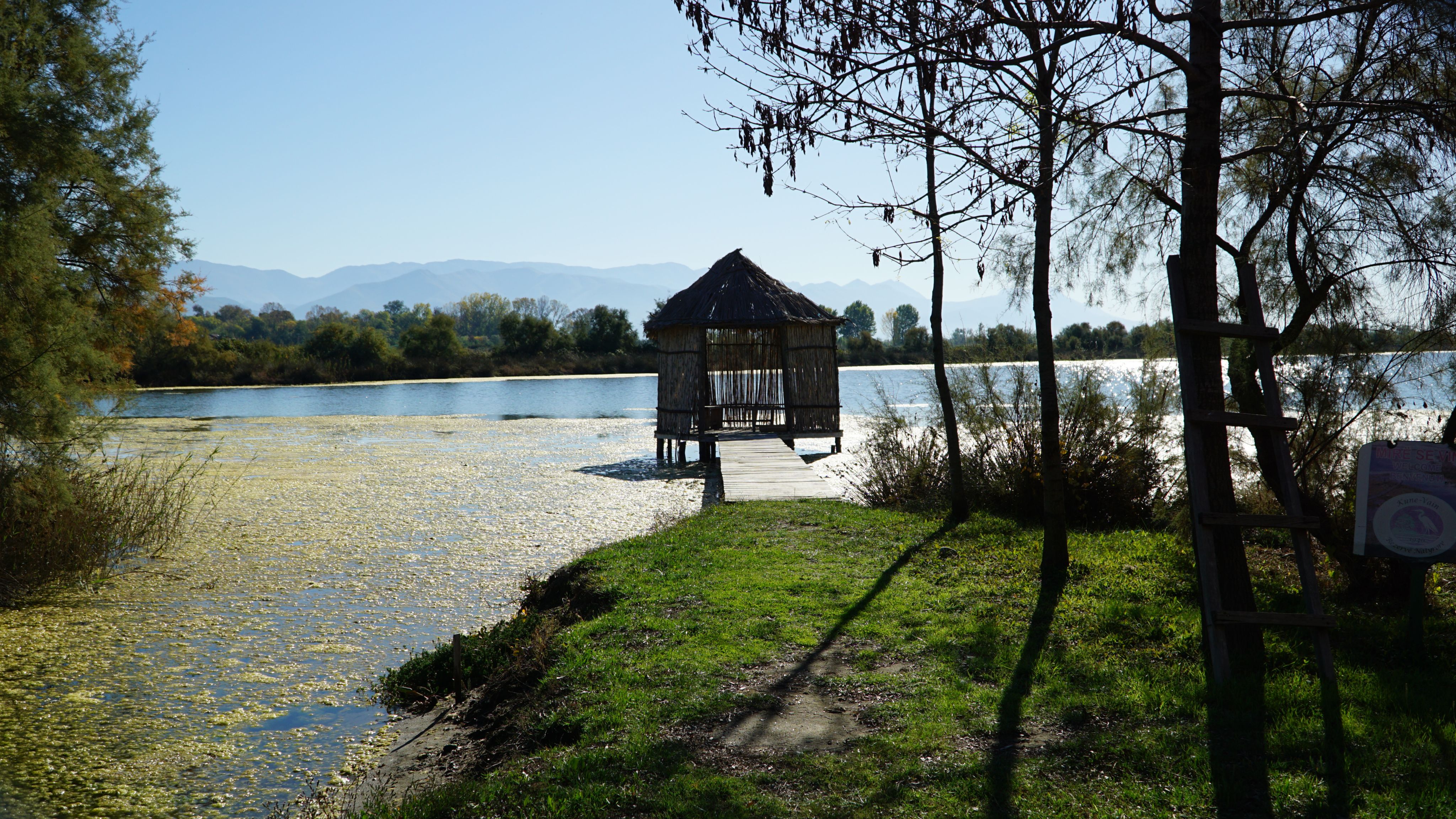
Promising Results:
Flourishing fish and bird life
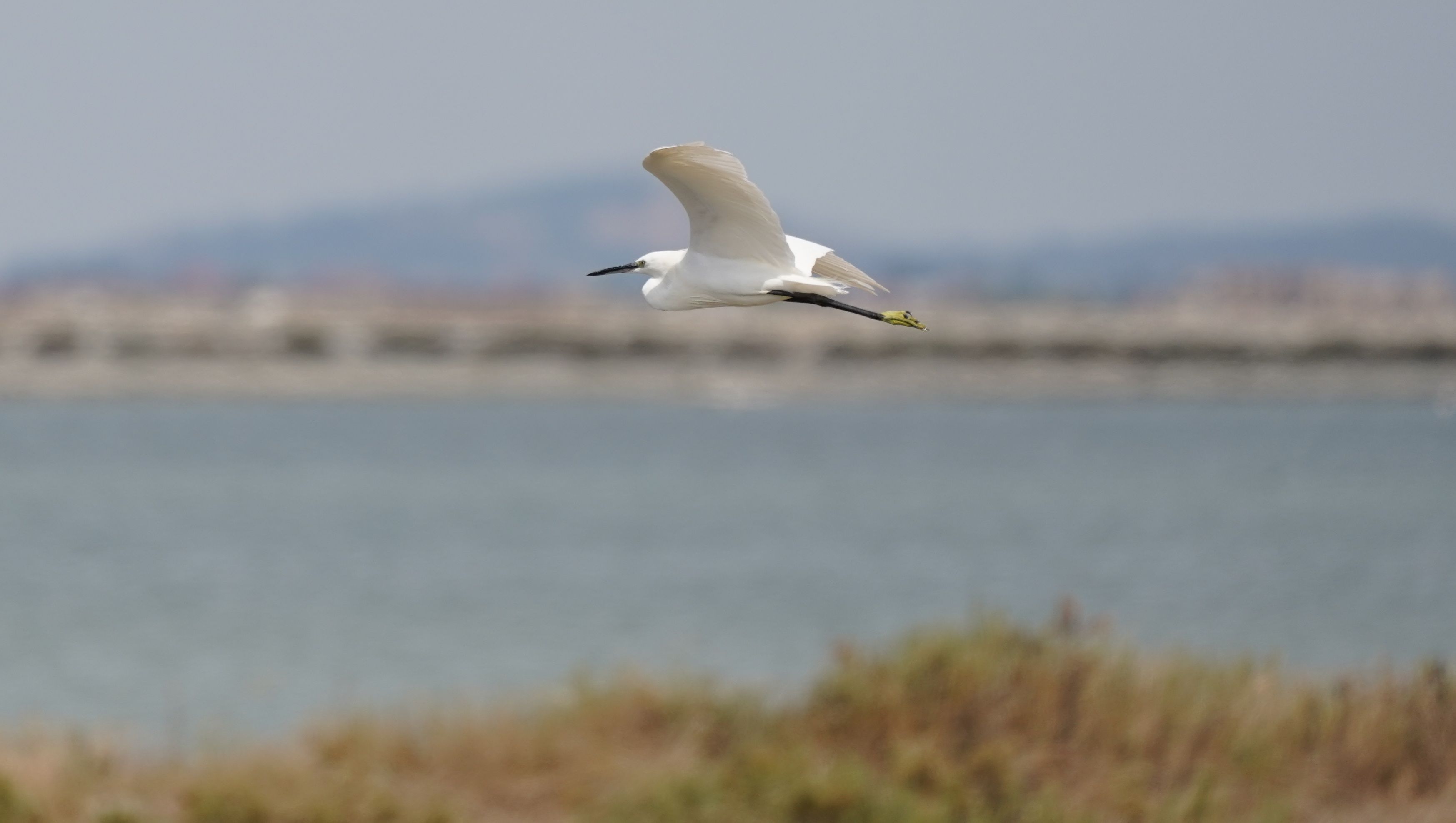
The reconstructed tidal channel between the sea and the Ceka lagoon restored free circulation of seawater helping to regulate the lagoon’s salinity and build resilience in the region to absorb floods.
Environmental expert Jak Gjini says the tidal channel provides “enrichment of the lagoon with unpolluted marine waters [to] generate the biological abundance that this ecosystem should have.”
Local fisher Kadri Gjeltja has benefited from the intervention to open the tidal inlet. “We have noticed the multiplying of sea bass, kocë fish, and fowl. Saltwater is also good for eels because it increases their quantity. They are smaller but have a better taste,” said Gjeltja.
Local fishers have also seen the benefits for bird populations. “Now that fish have been increasing in number in the lagoon, the pelican is also present,” says Gjeltja. “And we see that the flamingos have also been increasing in number.”
Local fisher Kadri Gjeltja discusses the beneficial outcomes of the EbA project, particularly the open tidal inlet.
This flourishing biodiversity is good news for local livelihoods in agriculture, fishing, and tourism. Community members are recognizing these benefits, including Demi, who says the project is helping with flood prevention, though he notes continued efforts will be needed “to eliminate the flooding of the area.”
The successes achieved through this project also provide information for Albania’s national approach to the urgent challenge of building resilience to climate change.
Scaling Up Ecosystem-Based Adaptation Through the NAP Process

As a priority action in the NAP and an early win for Albania’s national adaptation efforts, the EbA project in the Kune Vaini Lagoon System has strengthened the systems, capacities, and institutions needed to adapt to climate change.
But with the scale and severity of climate change, no single project or action can ensure climate change resilience.
As climate change escalates, well-coordinated, well-financed, and sustained efforts to adapt will be essential to reducing vulnerability and building resilience. The NAP process has provided a mandate to replicate and scale up similar approaches across the country—key recommendations for doing so are outlined in an upscaling strategy developed based on the project.
Eneida Rabdishta recalls that at the beginning of the project, awareness of adaptation was a barrier: “People living in the lagoon were aware of the extreme weather events such as floods or high temperatures and they were noticing … seaweeds growing all the time. But they couldn't relate this to climate change.”
The pilot project raised awareness and built capacity, skills, and knowledge on adaptation among both local communities and national institutions.
“[EbA] was totally a new concept and there was a lack of knowledge in the central government institutions and also in the local units,” she says.
For Gjini, addressing these capacity-building gaps was one of the most important results of the project: “Above all, it was about increasing the capacities of the national and local governments and of the community to adapt to climate change.”
Watch Jak Gjini talking about KVLS’s abundant biodiversity, the reasons for choosing a hybrid intervention in the tidal channel inlet, and the most substantial outcomes of the EbA project.
The Albanian government is working on new projects to scale up the EbA intervention in the KVLS region and replicate the experience in the Narta and Karavasta lagoons in southern Albania.
“It was definitely considered a very successful project. Now the Ministry of Tourism and Environment is also trying to implement this project in the other lagoons,” says Rabdishta.
For Gijni, the achievements so far provide compelling evidence for why EbA approaches matter. He reflects that with “well-researched and well-studied activities, which also need to be well-managed, we can achieve results.”
Credits
Videography: Reard Gjermani
Interviews by: Reard Gjermani and Eneida Rabdishta
Writing, video editing, and story design by: Cesar Henrique Arrais
Edited by: Christian Ledwell
Special thanks to: Laureta Dibra, Jak Gjini, Brahim Demi, Patrick Guerdat, Violeta Nodca, Kadri Gjeltja, and Mihallaq Qirjo.
The ‘Building the Resilience of Kune-Vaini Lagoon through EbA’ project was implemented by the Albanian government and United Nations Environment Programme (UNEP) with funding from the Global Environment Facility (GEF). Read more about this project from UNEP.
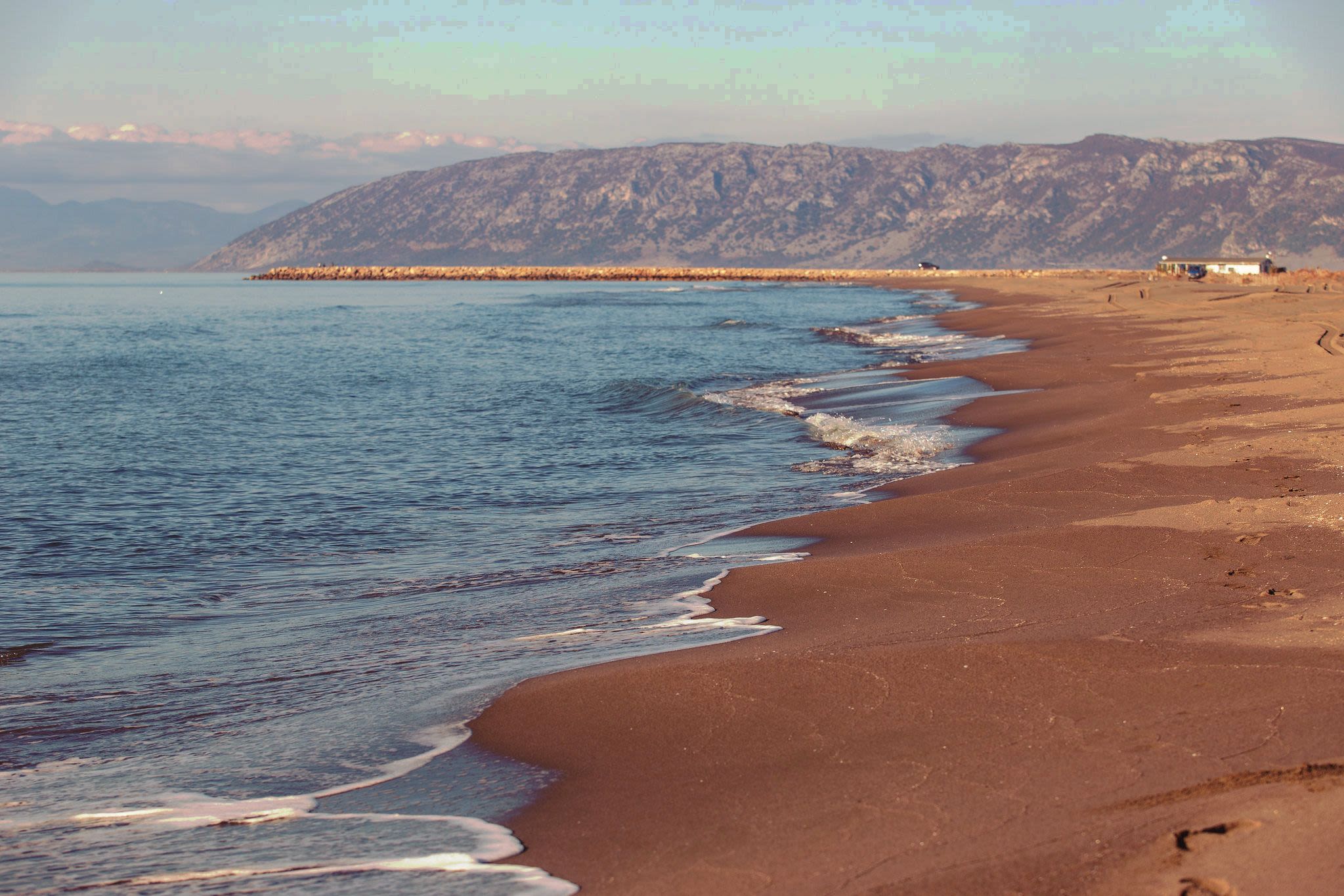
To learn more about Albania’s NAP process, visit NAP Trends. To find out more about EbA in the NAP process, visit the NAP Global Network’s theme page on nature-based solutions.

